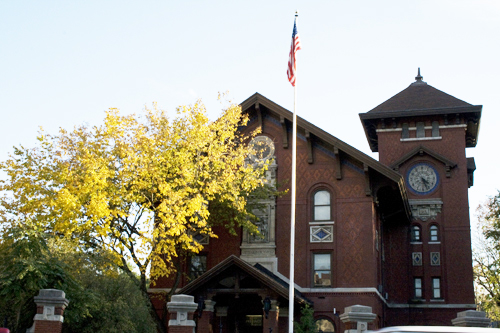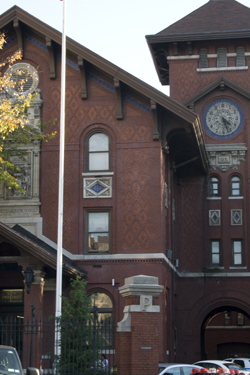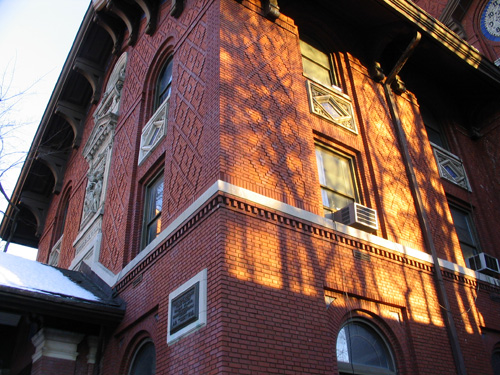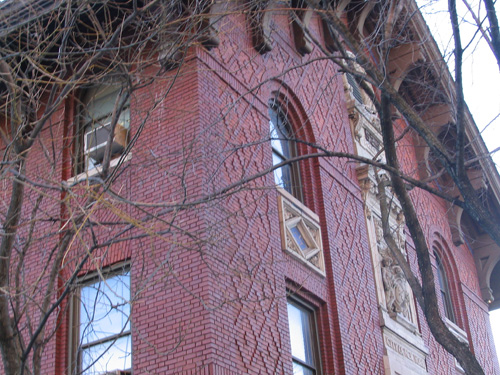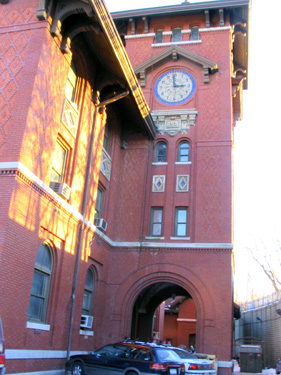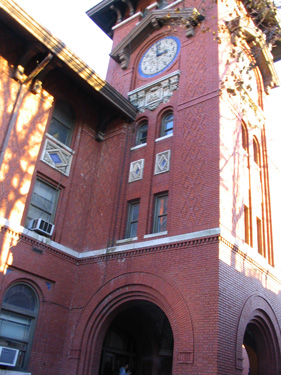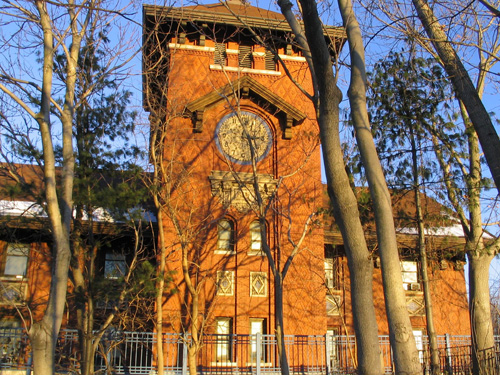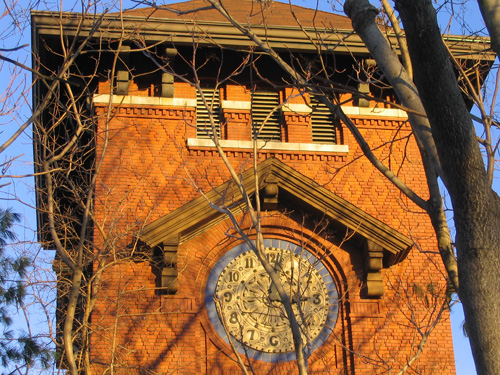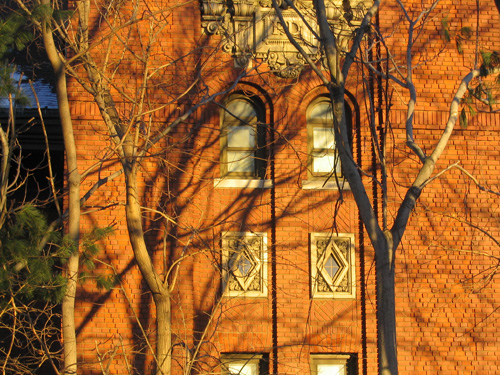52nd Precinct
Station House
Originally 41st Precinct Station House (and stable)
3016 Webster Avenue at Mosholu Parkway
Stoughton and Stoughton, 1906
At an odd angle to adjoining buildings along Webster Avenue, set back in the shadow of a bridge and a higher overpass, this station house and its tower were nevertheless once a prominent landmark in a semi-rural Bronx landscape. The alignment of the building makes plain that it once stood on Mosholu Parkway, where the broad tree-lined carriage road ended at the Harlem Division rail line, to the northeast of a station serving the suburb of Bedford Park and the new Botanical Garden. As the police station was being finished, a bridge over the tracks made a connection to Bronx Park and Pelham Parkway, and it became possible to traverse the new borough along a continuous greenway. The Olmsted-inspired roads had originally been intended for carriages, but the precinct’s bicycle patrolmen soon found themselves busy ticketing automobiles, some driving at thirty miles an hour.
Several new station houses had been built following the consolidation of Greater New York police departments in 1898. For the streets of the Bronx, Renaissance urban fortresses or palazzi were often the models, as in the case of the Simpson Street station (“Fort Apache”). However, with “the verdure of the park on all sides,” the Mosholu site seemed to require a more picturesque design. Stoughton and Stoughton followed other architects of the nineteenth century in borrowing from Italian landscape painting the image of a broad-eaved, tile-roofed country house with an attached campanile.
The front elevation of their red brick “Tuscan villa” is dramatic. The tower and the four-story, 80-by-50-foot main building develop a strong vertical thrust. It is counteracted by horizontals, notably the silhouetted overhangs of three matching roofs—on the large porch, the station house, and the tower—supported by large wooden brackets, corbels, and (on the porch) a timber king-post. The facade is organized into broad lateral areas: characteristically “Italianate” round-headed windows on the ground floor; a limestone belt; then tall recessed arches enclosing round-headed above rectangular windows; then, in the attic, a large oculus. The organization continues horizontally on the other sides of the building and onto the square tower attached at the center of the west facade. Here, rhyming with the features of the front, the ground floor is an arched porte-cochere (where the patrol wagon could discharge its passengers) and the attic level is occupied by clock faces on three sides, with another limestone belt below the pyramidal roof.
Striking and picturesque, but perhaps not sufficiently “municipal.” The City, and the era, required an ornamental display to assert the dignity of a public building. Stoughton and Stoughton, whose Soldier’s and Sailor’s Monument had just been completed on Riverside Drive, thoroughly knew the methods of Beaux Arts exterior elaboration, often referred to as “cartouche architecture.” It’s admirable that at the 41st Precinct craftsmanship rather than amplitude predominates. There is indeed a cartouche over the porch, a high relief, sculpturally developed version of the city seal, executed in white terracotta. The clock faces and plinths, again white terracotta, are ringed with cobalt blue, and shining deep blue appears in accents elsewhere on the facades—in framed diamond lozenges, on window spandrels, and as a patterned course of tiles just beneath the eaves. (Originally, the whole roof was of blue-glazed tile.) Polychromed terracotta is rivaled by specialized brickwork. The Flemish bond of the upper walls, for example, is patterned with the zigzags of contrasting surface, known as “diaper.”
One advantage may be salvaged from today’s crowded site. By stairs to the right of the building, visitors can climb to the level of the old bridge, now used for parking, and examine close-up the rich workmanship of this perfectly maintained landmark.
David Bady
Photographs:
Lehman College Art Gallery and David Bady
